That's all folks!
For the final post on my 2-week visit to Laos, which I undertook a couple of months ago with my brother Tim in tow, I think it's fitting to end with a Khmer temple, just to ensure I bring it back full circle. The temple, which I visited on the penultimate day of the trip, is variously called Ou Moung, or Vat Tomo, or Huei Thamo but whatever name you choose, it hardly rivals the majestic location or diverse iconography of its near neighbour Wat Phu, but is worth a visit nonetheless. Set in a forest resounding with bird-song and flanked by a small tributary of the Mekong River, it houses a rare mukhalinga, a stone linga with two clearly-defined albeit gloomy faces, that I'm astounded is still in situ and has not been moved to a place of safety. Our visit was unrestricted and we were alone at the temple so I fear for the linga if anyone with less honourable intentions than ours, makes the effort to visit the site. The stone linga is sat inside the southwest gopura which is the best preserved of the ruins, which include the remains of laterite and brick towers. Some of the sandstone doorways are decorated with figures and nearby a couple of lintels, naga antefixes, a somasutra with makara head and a series of boundary posts are all that remain. An inscription found at the temple many moons ago declared it was dedicated in 889 to a consort of Shiva. We spent an hour at the site, I could've stayed much longer, as these sites hold a great fascination for me. Tim on the other hand was bored after about ten minutes!
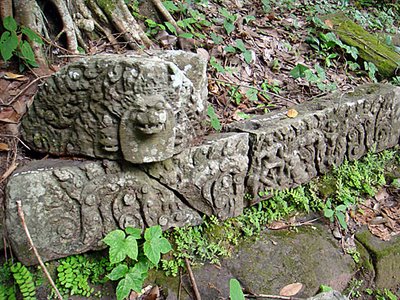 This narrow lintel shows Indra (without his elephant) or possibly Shiva, with a partial naga antefix above
This narrow lintel shows Indra (without his elephant) or possibly Shiva, with a partial naga antefix above
 This narrow lintel shows Indra (without his elephant) or possibly Shiva, with a partial naga antefix above
This narrow lintel shows Indra (without his elephant) or possibly Shiva, with a partial naga antefix above 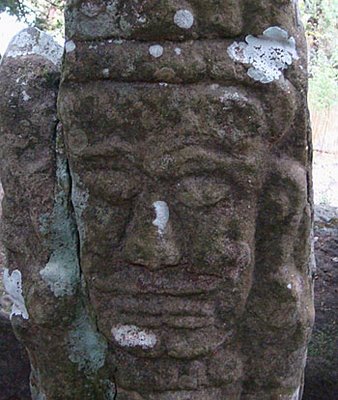
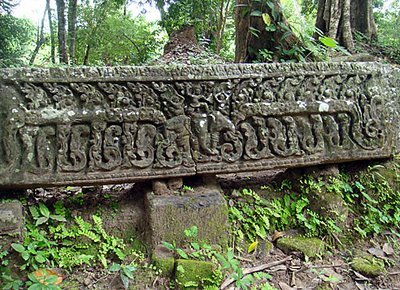
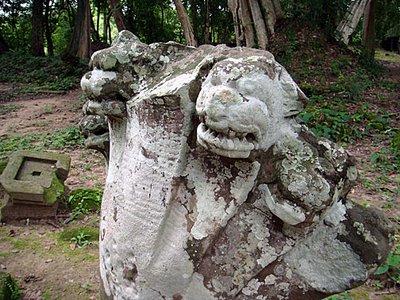
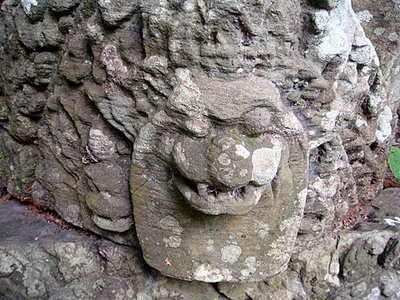
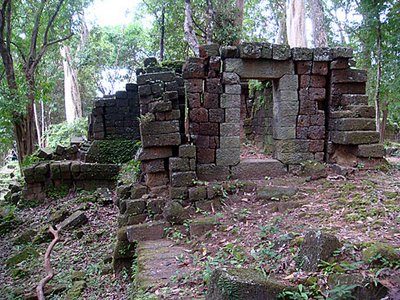
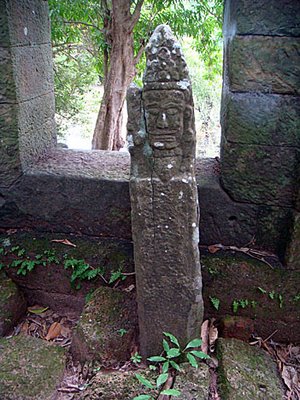
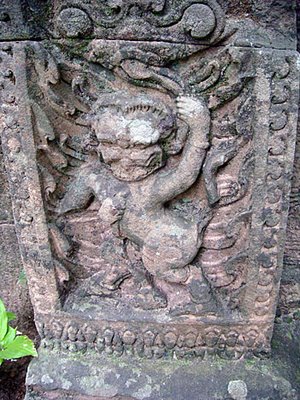


0 Comments:
Post a Comment
<< Home